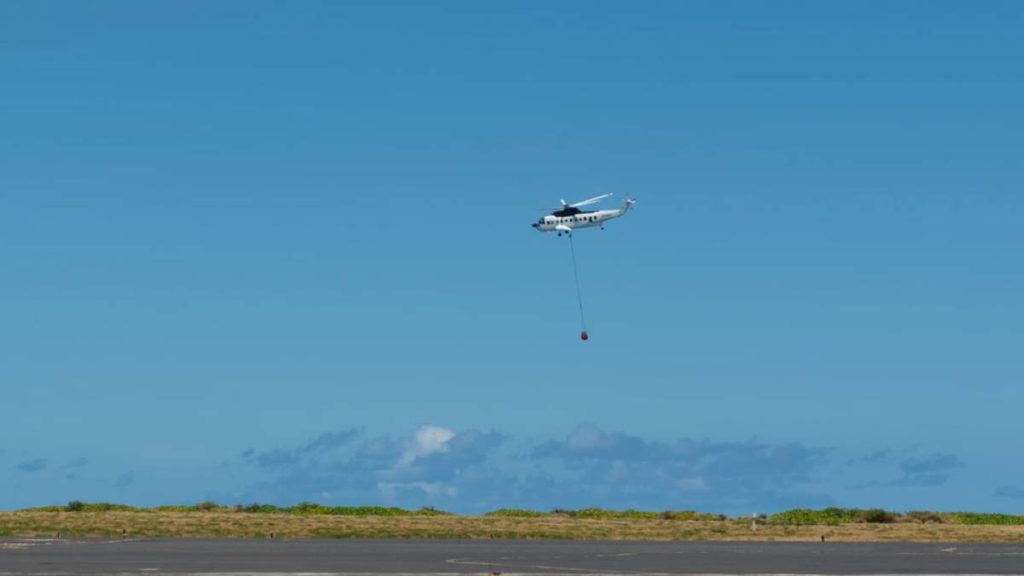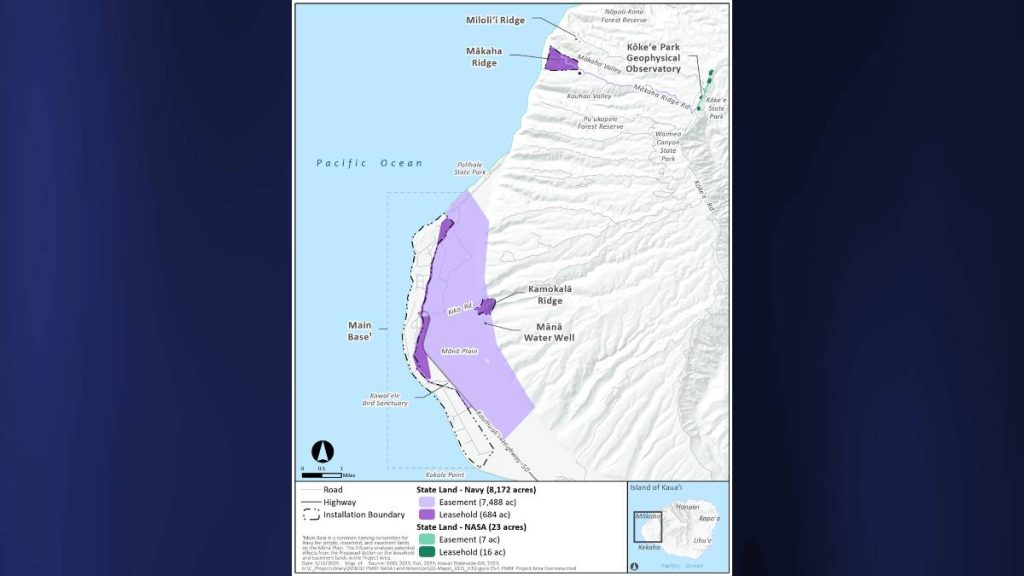Navy, NASA hosting 3 public meetings about Pacific Missile Range Facility, Kōkeʻe Park Geophysical Observatory
The U.S. Navy and the National Aeronautics and Space Administration are seeking public comment at three public meetings this week about their recently released draft Environmental Impact Statement for proposed continued use of state lands on Kaua‘i for the Pacific Missile Range Facility and Kōkeʻe Park Geophysical Observatory.

The meetings all run from 5 to 8 p.m. The first one is tonight at Kaua‘i Veterans Center, 3215 Kaua‘i Veterans Memorial Highway in Līhuʻe.
On Wednesday, the meeting will be at Kekaha Neighborhood Center, 8130 Elepaio Rd. in Kekaha. And on Thursday, the location will be the Sheraton Kaua‘i Coconut Beach Resort, Makai Ballroom, 650 Aleka Loop in Kapaʻa.
To participate online, register at PMRF-KPGO-EIS.com.
Captain Robert Prince, the Commanding Officer of the Pacific Missile Range Facility, spoke on Wednesday at a media roundtable to express his appreciation for the Kaua’i community and highlighting the military base’s significance as the world’s largest instrumented, multi-dimensional testing and training missile range. Its mission includes developing and testing defense technologies and high-end weapons systems.
Prince, who has been at the base just two months, also highlighted the significant economic impact it has on Kaua’i, with about 1,000 people employed by the facility or contracted to work at the base. Only about 40 workers are military personnel.
Kerry Wells, the Environmental Impact Statement project manager, said base personnel also support emergency response initiatives across the island and participate in a variety of community partnerships.

Public affairs official Lydia Robertson said the Navy does not intend to expand its activities or build any new structures on the leased land. The lease renewal, she said, would simply allow the Navy to continue their ongoing operations.
According to Navy documents, the current real estate leases, which date back to the 1960’s, are set to expire between 2027 and 2030. At the time, the Navy leased these combined 8,731 acres from the State of Hawai’i for $1.
The Navy is currently pursuing two action alternatives for the real estate agreements: either renew the current lease as-is or buy the land parcels outright.
Robertson said if the Navy were to renew their Pacific Missile Range Facility leases with the state, it would pay a “fair market rate” rather than the original $1 sum.
The third alternative would be to let the leases lapse without a new agreement. In this case, NASA and the Navy could lose access to these sites.
NASA operates the observatory to collect geodetic data that contributes to daily measurements of the Earth’s orientation in space and rotation. This data is used for scientific studies and a wide variety of positioning and navigation applications.
While the draft Environmental Impact Statement indicates the Navy does not anticipate any additional adverse impacts to the natural environment caused by the lease renewal, previous assessments, including the 2024 Environmental Assessment, state that Navy activities do have a considerable impact on native species and the local environment.
Both the main base at Pacific Missile Range Facility and NASA’s base at Kōkeʻe Park Geophysical Observatory are home to several of Kaua’i’s endangered wildlife species. The ʻōpeʻapeʻa, or Hawaiian Hoary bat, has been recorded at both of these sites, as well as endangered Hawaiian seabirds such the short-tailed Albatross.
The impacts range from noise and light pollution to habitat loss and wildlife collisions, the document said.
In addition to its significant environmental resources, the military base also is home to many spiritually and culturally significant sites for Native Hawaiians.
According to the base’s archaeological survey conducted in 2024, sites in Mana Plain and Kamokalā Ridge are home to historic and culturally sensitive sites including historic dwellings, heiau (temples) and Hawaiian burial sites.
The archaeological study recommended that these Native Hawaiian cultural sites be preserved, however the Navy did not offer any insight into whether these actions have been implemented.
While it is unclear to what extent the Navy preserves these archaeologically-significant resources on site, the Navy does re-inter Hawaiian remains at the base, Robertson said.
The Navy erected the Lua Kupapa’u O Nohili crypt in 2019 to house the remains of ‘iwi kupuna that have been discovered in Nohili dunes.



